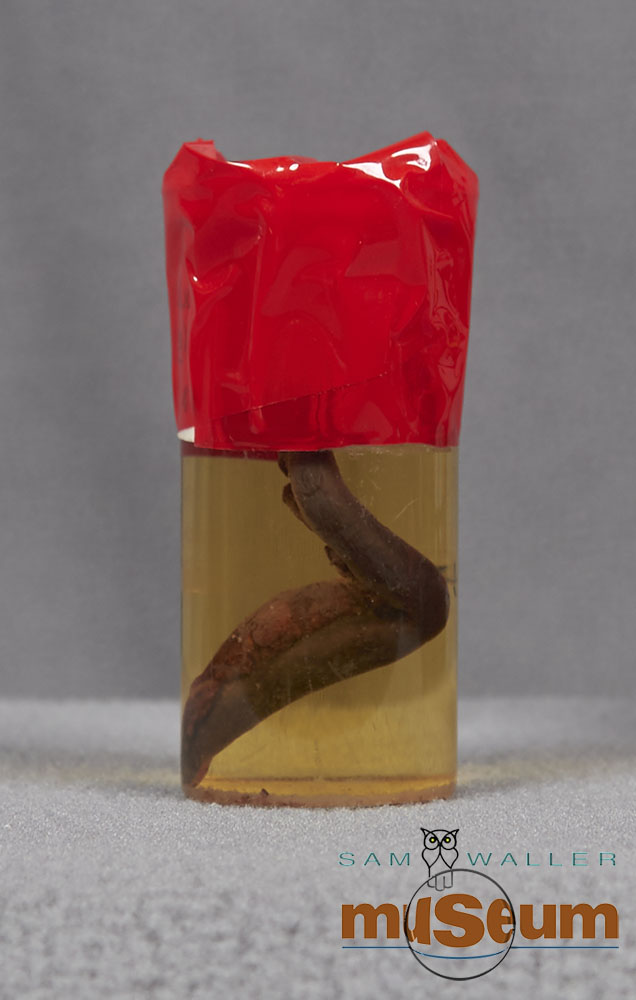This item, while extremely common, is one of only two at the Sam Waller Museum; a human appendix. Known in medical circles as a vermiform appendix, it is a tube with only one connected end. This connection attaches to a pouch like structure of the colon, located at the junction of the small and the large intestines. This organ is approximately 9 cm in length but can range from 2 to 20 cm; however, the longest appendix ever removed was 26cm. The diameter of the appendix is usually between 7 and 8 mm. Typically the appendix is located in the lower right area of the abdomen, near the right hip bone.
Appendixes develops early in pregnancy and was thought for many years to be a left over from our evolutionary process. Recent evidence suggests that the appendix is a safe haven for friendly gut bacteria. These friendly bacteria can be wiped out of the intestinal tract by dysentery or cholera but are kept safe in the appendix from which they can repopulate the intestinal tract.
The collection item pictured here is preserved as part of the original Sam Waller Collection.


